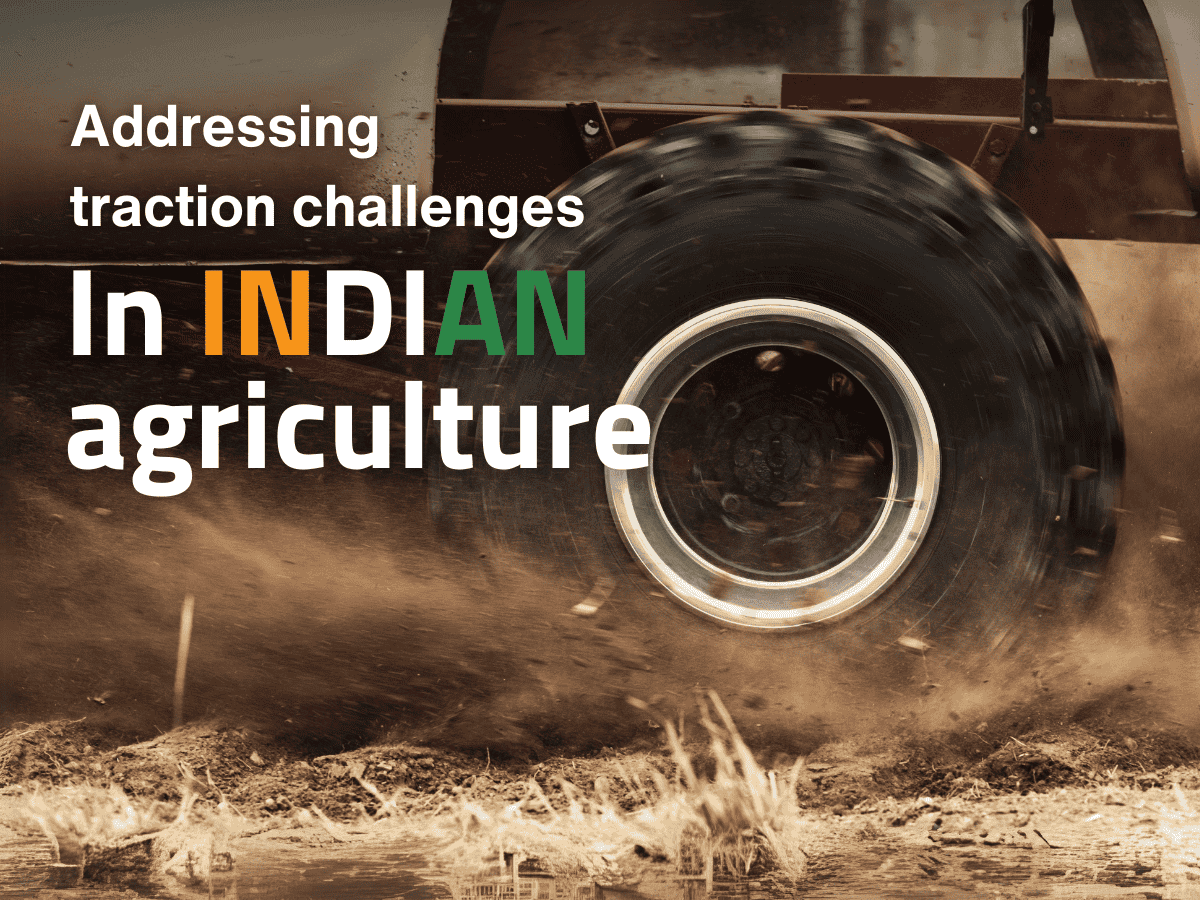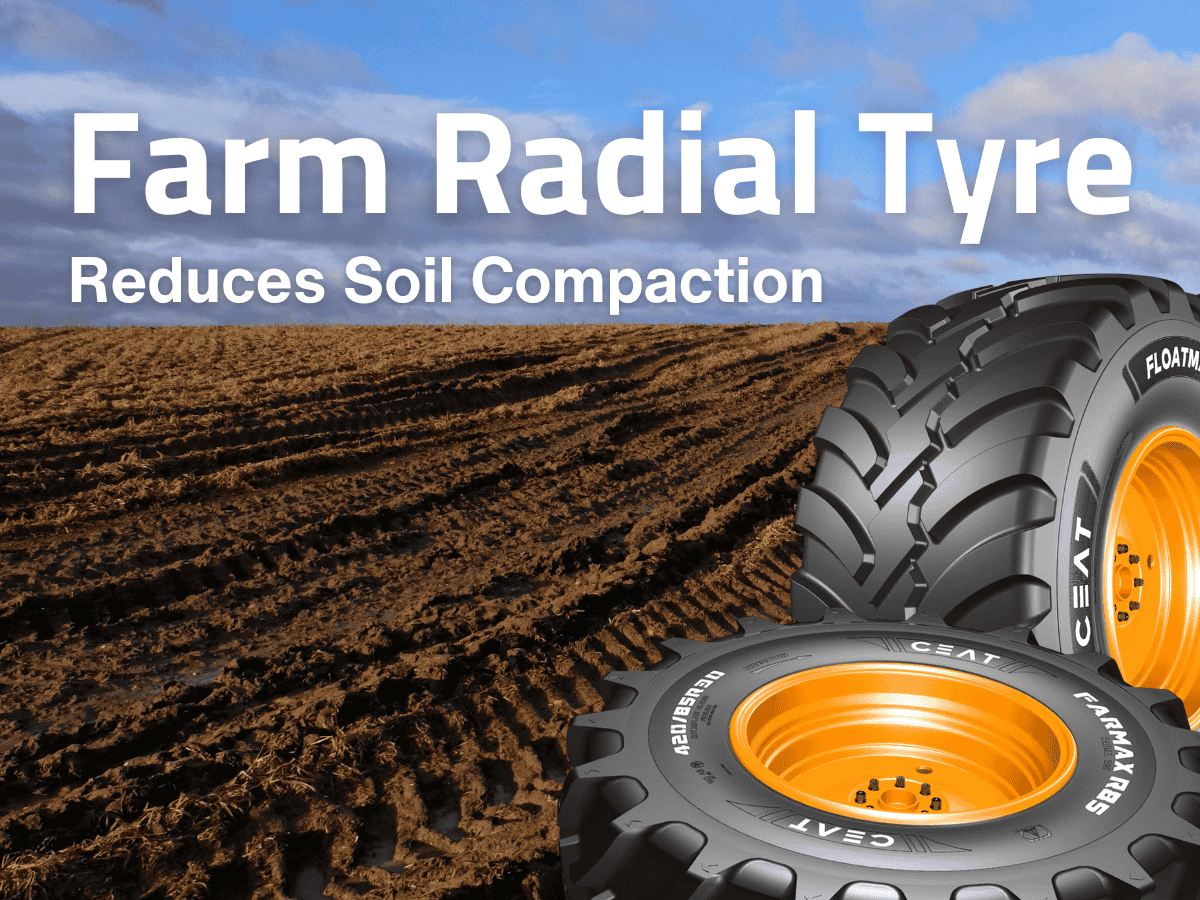ceat-speciality:blogs-tags/all,ceat-speciality:blogs-tags/ctr
Compaction, Traction and Roadability for Tractor Tyre Performance
Wed, 4 Sep 2024 | PRODUCTS
Understanding the Gross Contact Area Index is essential for optimising tractor tyre performance. This key metric plays a significant role in determining how effectively your tractor operates across various terrains. The Gross Contact Area Index, often called CTR (Compaction, Traction, and Roadability), encompasses three critical factors directly impacting your farming efficiency: compaction, traction, and roadability.
But what exactly is CTR, and why is it vital for your farming operations? CTR evaluates how well a tyre distributes its weight to minimise soil compaction, maximise traction on different surfaces, and ensure smooth roadability between fields. Each component of CTR affects your tractor's ability to perform optimally, influencing everything from crop yield to fuel efficiency. In this blog post, we’ll delve into each aspect of CTR, exploring how it affects your tractor’s performance and how you can leverage this knowledge for better results in the field.
Compaction, Traction and Roadability Explained
CTR measures the ratio of a tyre's contact area with the ground to its total cross-sectional area. Essentially, this metric reveals how much of the agricultural tyre touches the soil when used.
To break it down further, imagine the tyre's footprint as it rolls over the ground. A higher CTR means a larger portion of the tyre’s surface is in contact with the soil. This increased contact area can lead to several significant benefits.
Firstly, better traction is achieved because more rubber on the ground means improved grip and stability. This is crucial for maintaining control and efficiency, especially on uneven or slippery terrain. Secondly, with more of the tyre in contact with the soil, the pressure is distributed more evenly, which reduces soil compaction. Soil compaction can hinder root growth and overall crop health, so minimising it is vital for sustainable farming practices.
A higher CTR generally results in enhanced performance and less soil damage, making it a critical factor to consider when choosing and evaluating agricultural tyres for your tractor.
Factors affecting Compaction, Traction and Roadability
Several factors influence a tyre's CTR:
- Tyre Size: Larger tyres typically have a larger contact area, but this isn't always true. The aspect ratio and profile also play a role.
- Tyre Inflation Pressure: Correct tyre pressure is vital. Overinflation reduces the contact area, while underinflation can lead to excessive deformation and uneven wear.
- Load: Heavier loads increase the contact area, but excessive loading can damage the tyre.
- Soil Conditions: Soft, wet soils can increase the contact area, while hard, dry soils may reduce it.
- Tyre Design: The tread pattern and construction of the tyre significantly impact CTR.
Importance of Compaction, Traction and Roadability in Agriculture
A higher CTR offers several advantages:
- Improved Traction: More rubber in contact with the soil means better grip, especially in challenging conditions.
- Reduced Soil Compaction: A larger contact area distributes the tractor's weight more evenly, minimising soil damage.
- Lower Fuel Consumption: Optimal CTR can reduce rolling resistance, saving fuel.
- Increased Productivity: Better traction and reduced soil compaction contribute to higher yields and farm efficiency.
How to optimise Compaction, Traction and Roadability?
To maximise the benefits of CTR:
- Maintain Correct Tyre Pressure: Follow the manufacturer's recommendations for tyre pressure based on load and operating conditions.
- Choose the Right Tyre Size: Select tyres appropriate for your tractor and your work type.
- Consider Tyre Technology: Look for tyres with VF technology, which allows for lower inflation pressures without compromising load capacity.
How do CEAT Specialty tyres reduce compaction?
Our CEAT Farm Radial Ag tyre maximises tyre footprint through wider treads, larger volumes, and flexible construction. This reduces soil pressure, boosting crop yields. Unlike competitors, our tyres allow lower operating pressures, minimising compaction.
How do CEAT Specialty tyres enhance traction?
Traction is vital to farm productivity. Our CEAT Farm Radials excel in grip with their low-angle shoulder lugs, conquering mud and slush. Our tyres' longer footprint and increased ground contact enhance traction, minimising slippage and maximising output.
Do CEAT Specialty tyres provide roadability?
CEAT Farm Radials excel beyond the farm. Unlike other tyres, ours offer superior roadability. Our farm tyres provide exceptional stability and comfort on the road due to their unique lug design. Experience the versatility of a tyre built for both field and road.
By understanding and optimising the CTR concept, farmers can significantly improve their tractor's performance and protect their valuable soil.







